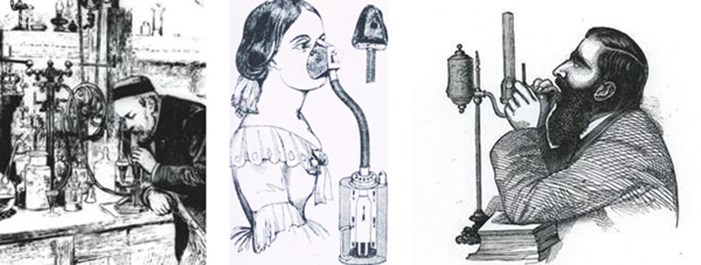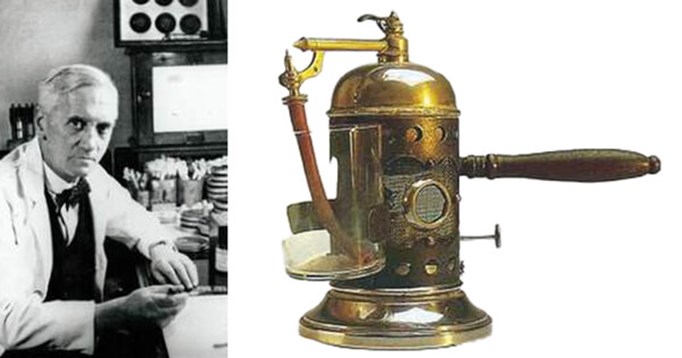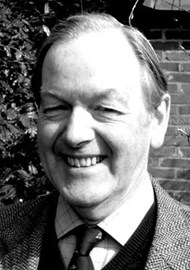Innovation seems to have been in the strapline of every meeting, conference and course for the last few years. You would be forgiven for thinking it is a new a concept, but as Neil Weir beautifully details, innovation has been present throughout medical history.
ENT is a specialty of the early 20th century when the separate disciplines of otology, practised by surgeons, and laryngology, practised by physicians, came together.
Early otological examination was limited to Hildanus’s speculum and available sunlight, and treatment to Eustachian tube catheterisation (Guyot, 1724), myringotomy (Degravers, 1788 and Cooper, 1801) and attempts to drain mastoid abscesses and trephine the mastoid bone (Petit, 1774).
The dawn of ‘laboratory medicine’ in the middle of the 19th century with the birth of microbiology (Pasteur and Koch), antisepsis (Lister), asepsis (Semmelweiss) and general anaesthesia (Wells - nitrous oxide, Morton – ether, and Simpson - chloroform) opened a new era of surgery of the ear, nose and sinuses and throat.
“No-one had succeeded in visualising the living larynx until the discovery, in 1854, of indirect laryngoscopy by Garcia, a singing teacher”
Despite a knowledge of the anatomy, physiology and pathology of the larynx, no-one had succeeded in visualising the living larynx until the discovery, in 1854, of indirect laryngoscopy by Garcia, a singing teacher. This opened up the field of laryngology promoted in 1857 by Türck of Vienna and popularised in 1858 by Czermak of Budapest. Sunlight was replaced by the oxyhydrogen incandescent light (Voltolini, 1859) and later by electric light (Edison, 1879). Jelinek, in 1884, demonstrated the analgesic and anaesthetic properties of cocaine applied to the mucous membrane of the larynx and pharynx. Thus, mirror-guided laryngoscopy enabled surgical intervention for upper airway obstruction and transoral biopsy of laryngeal tumours. Direct laryngoscopy was first performed by Kirstein of Berlin in 1895.

Left: Louis Pasteur (1822-1895). Image from Weird and Mudry [1].
Middle: Administration of vapour produced by liquid chloroform (1858) [1].
Right: Joseph Czermak’s autolaryngoscopy [2].
A new diagnostic field was opened in 1895 with the discovery of X-rays by the Austrian physicist, Röntgen. Then Curies’ discovery of radium in 1898 was, in 1903, first applied to malignant disease by their assistant, Jan Danysz, thus leading to the development of radiotherapy.
The battle to control pathogenic infection, and in particular syphilis, started before the First World War in 1909 with Ehrlich’s discovery of ‘606’ or salvarsan. The ‘sulpha’ drugs, first developed by Domagk in 1935, became the only antibiotics during the first half of the Second World War before the commercial production of penicillin (first observed by Fleming in 1928) by Florey and Chain. The discovery of streptomycin in 1944, isoniazid in 1946, chloramphenicol in 1947, and the cephalosporins in 1953 ultimately reduced the complications of acute infections and enabled surgeons to enlarge the range of their fields.
“Medical innovation could not be better demonstrated than in the field of audiology”
Early attempts at the turn of the 20th century to surgically restore hearing in otosclerosis had been thwarted by lack of antibiotics and poor magnification. Although Nylen of Sweden had introduced the monocular operating microscope in 1921, modern microsurgery of the ear (and later of the larynx) started in the 1950s as a direct result of improved anaesthesia, the existence of antibiotics and the development of the Zeiss binocular operating microscope.

Left: Alexander Fleming (1881-1955) in his laboratory at St Mary’s Hospital [1]. Image from Weird and Mudry [1].
Right: Joseph Lister’s antiseptic carbolic spray.
In the 1960s the invention, by Hopkins and Kanapy, of solid or flexible bundles of light fibres, connected to a proximal ‘cold light’ source later opened up new techniques of diagnostic endoscopy and sinus surgery.
Medical innovation could not be better demonstrated than in the field of audiology. The early audiometers were derived from two inventions: the induction coil (du Bois-Reymond, 1849) and the telephone (Bell, 1876). The thermionic valve, rapidly developed during the First World War, was incorporated into the Western Electric 1A audiometer (Fowler, 1922). Valves were replaced by transistors in the 1950s and have since been superseded by the microchip. Similar technological advances have been applied to hearing aids. The last 30 years of the 20th century saw the development of the cochlear implant which has revolutionised the treatment of profound deafness.
Studying medical history creates an awareness that what is often hailed as new is not so and what is old appears again in a new guise, often aided by an advanced technology.
References
1. Snow J, Richardson BW. On Chloroform and Other Anaesthetics: Their Action and Administration. 1858.
2. Czermak JN. On the Laryngoscope and Its Employment in Physiology and Medicine. Translated from French by Gibb GD. London, UK; New Sydenham Society; 1861:18.
Further Reading
1.Weir N, Mudry A. Otorhinolaryngology – An Illustrated History. Ashford, UK; Headley Bros; 2013.




